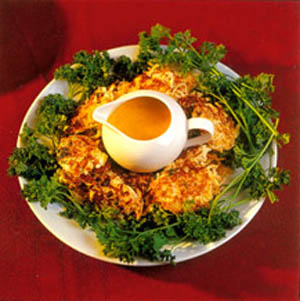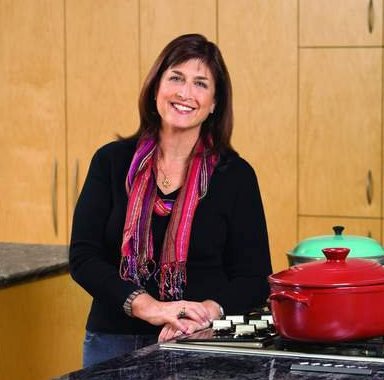
Seven men, two Torahs and God." That was the definition of a minyan in Cuba for decades. Today the Torahs and God no longer need to be counted.
In June of 2006, my husband and I co-chaired a humanitarian medical mission to Cuba through the combined efforts of the Jewish Federation of Greater Dallas and the American Jewish Joint Distribution Committee. Bringing much-needed medical supplies and clothing to the community was the primary objective of the mission. But as RJ's cooking columnist, I had another objective: to learn about culinary traditions on an island long sequestered from the Western world.
After the revolution in 1959, ninety percent of Cuba's Jews fled, leaving the poor, elderly, and party-affiliated behind. The once-vibrant community of 20,000+ Jews was reduced to a remnant of 1,200. Two generations of Jews grew up with little religious learning or observance.
In 1992, Castro relaxed his restrictions on religious observance, and for the first time in thirty-plus years, the Jewish community outwardly embraced its heritage. As part of Shabbat observance, members petitioned successfully for a weekly ration of chicken. Now, every Friday night some 370 members of the approximately 1,500-member community come together to pray and enjoy Shabbat dinner in Havana, Camaguey, and Santiago de Cuba.
Today's Cuban Jewish food bears little resemblance to the flavorful recipes of pre-revolutionary kitchens. Traditionally, the tastes of Spain, Africa, and the Caribbean were blended with exotic spices brought from the Middle East and China. Sofrito (a combination of onion, green pepper, and tomatoes mixed with other optional ingredients), for example, added color and flavor to many entrées and side dishes. But few of the foods Cubans once enjoyed have been plentiful since the revolution. Nitza Villapol, a popular television personality who taught generations of Cubans how to cook in the '50s, had the difficult task in the '60s of teaching cooking to a population on a ration-book allotment with little or no access to meat, milk, or the array of spices typical of classical Cuban cuisine.
It is still difficult to obtain meat rations in Cuba. Fish, too, is scarce because all fishing boats are outlawed (to prevent their being used to ferry people to Florida). Milk rations stop when a child turns eight. For protein Cubans consume rice and beans. Vegetables and fruits are scarce because much of the arable land is used either to cultivate tobacco or sugarcane for rum export or left fallow.
At the Patronato Synagogue, which serves as the community's cultural and religious center, I watched Tanya, one of the kitchen staff, prepare little fritters from a root that looked like a cross between a turnip and a daikon radish. The long, white, pink-tinged malanga--also known as dasheen, cocoyam, or more commonly taro--can be substituted for potatoes in many recipes. Immediately I had an idea. I'd been told how difficult it was to buy potatoes for latkes, and since in Jewish culinary tradition recipe variations have long been a natural outgrowth of necessity, I said, "Why not use malanga instead of potato for latkes?" Tanya agreed that the substitution made sense. (No one wanted to curb my enthusiasm by telling me malanga wasn't easy to come by either.)
So what foods do Cuban Jews eat? A small salad of cabbage, tomato, cucumber, and green beans was presented as a first course wherever we ate. Few vegetables and fruits were served--fried plantain, a small wedge of mango, a sweet dessert sauce made from guava, and a few pieces of potato. Chicken was prepared fricassee-style with potatoes or baked with lime, oil, and garlic (sometimes), onion (sometimes), salt (no pepper), and cumin. Occasionally chicken was also cooked with salsa china (soy sauce)--a reminder of the Chinese communist influence in Cuba.
In Santa Clara, our group was delighted by Claudia Barlia, 6, who got up to sing a new song she said she had learned just for us. As the sweet sounds of "Yerushalayim Shel Zahav" filled the room, tears of joy came to our eyes and a look of shocked amazement appeared on Claudia's face as we all joined in. We came from far away, and yet we were one people. She knew she was not alone.
As you enjoy the Cuban Jewish recipes on this website (see Frituras de Malanga, Mojo Sauce, Grilled Chicken Breasts with Sofrito, Sofrito Sauce) let them be a reminder: Am Yisrael Chai!


